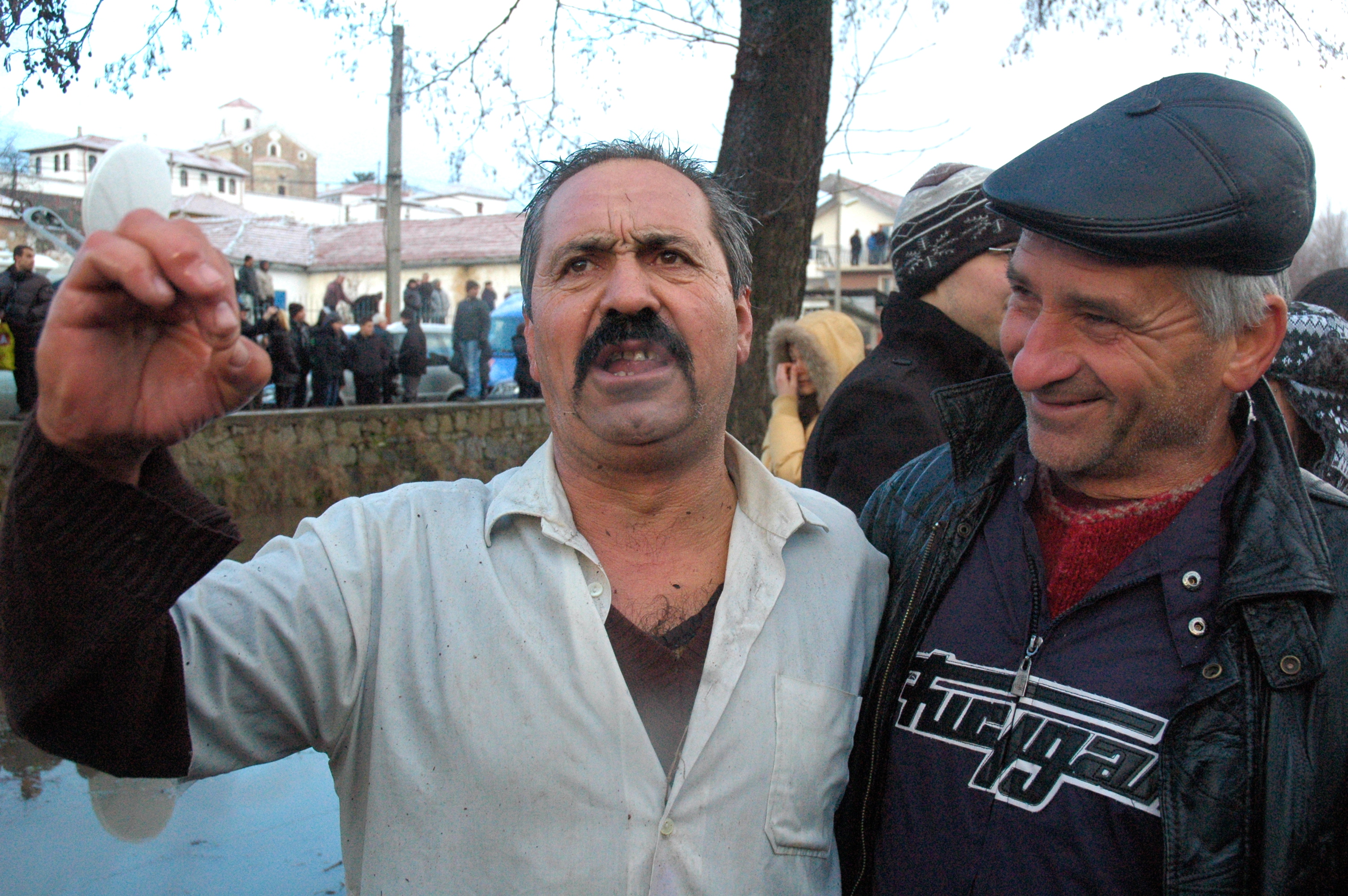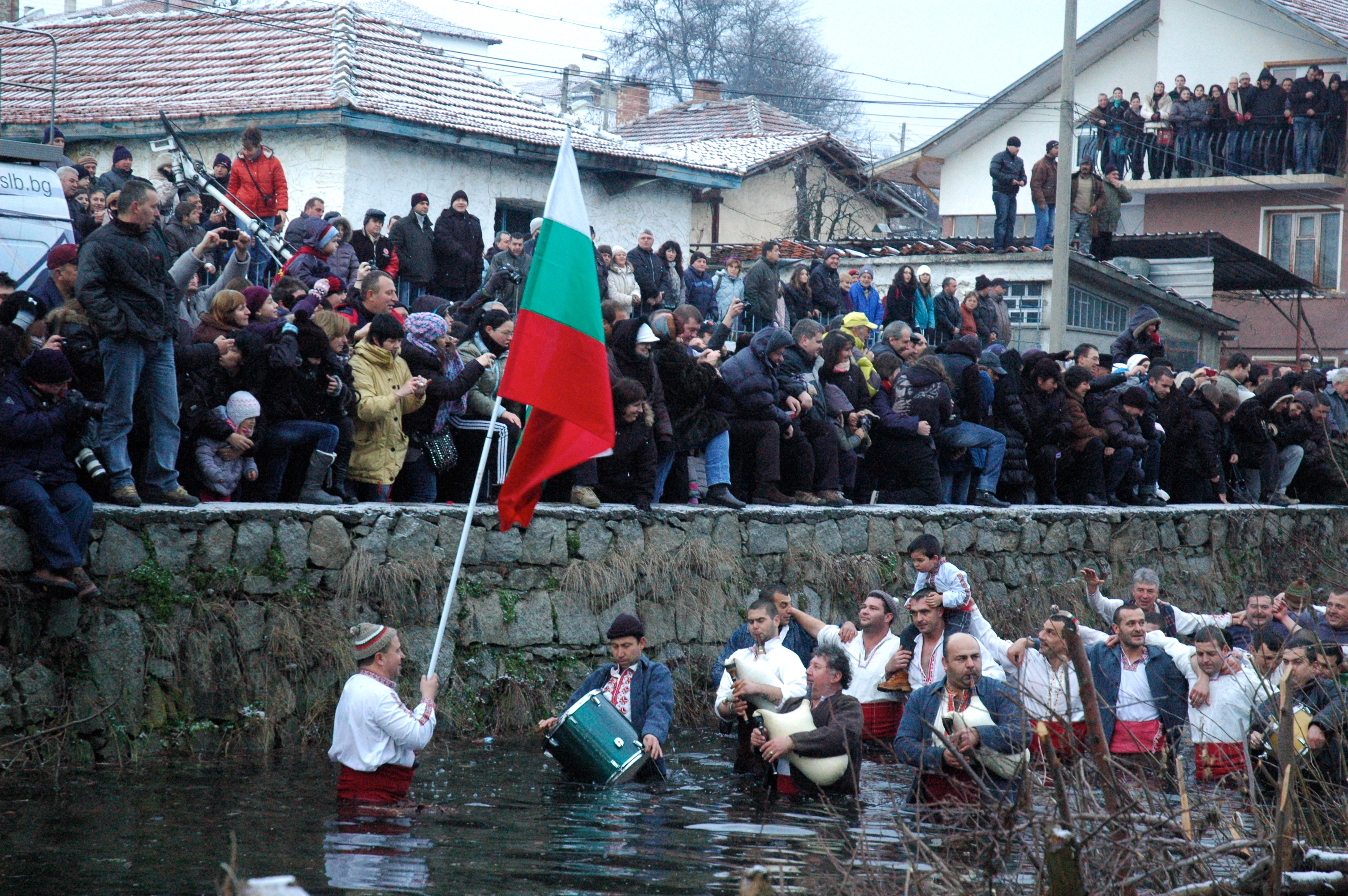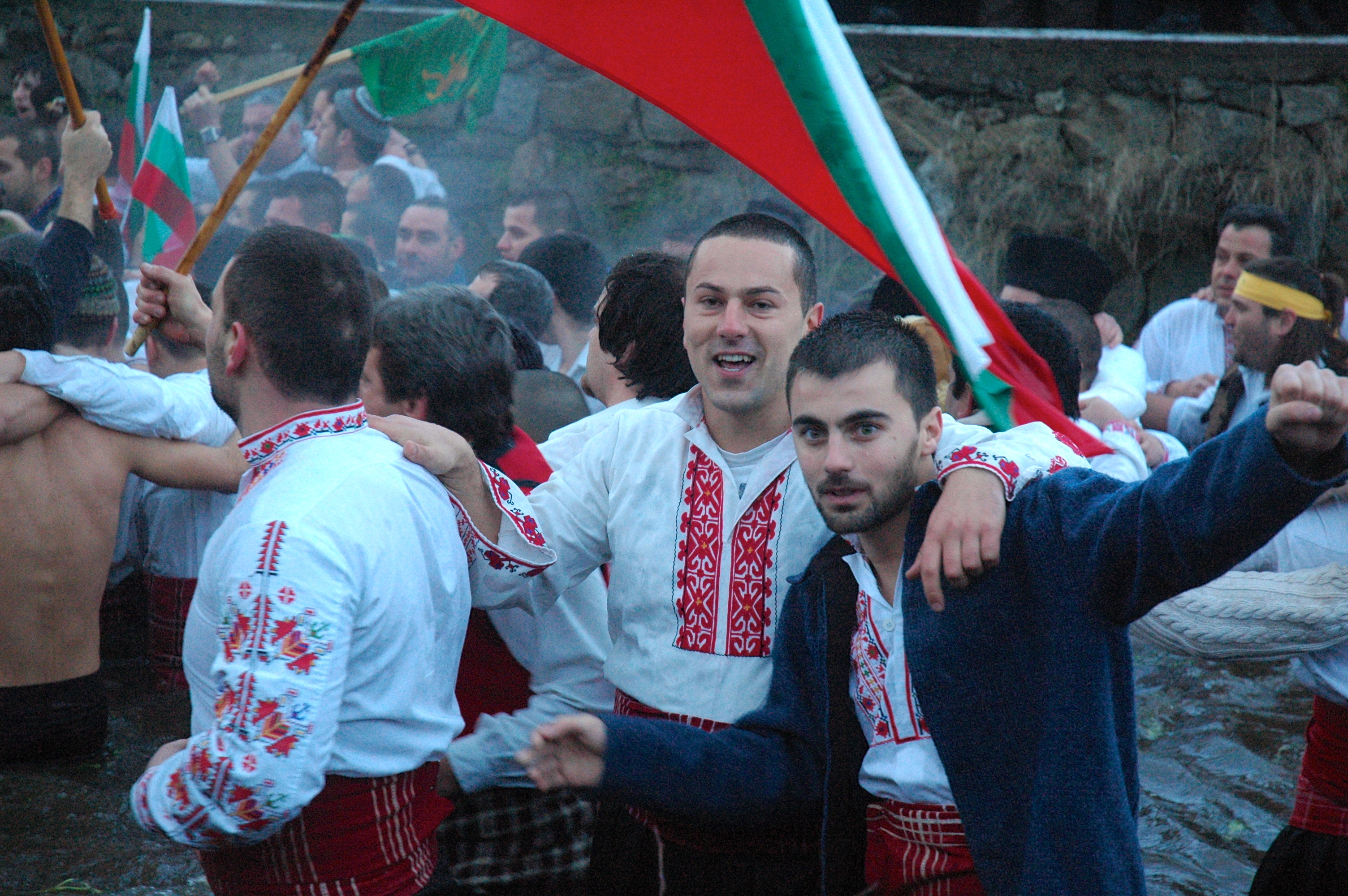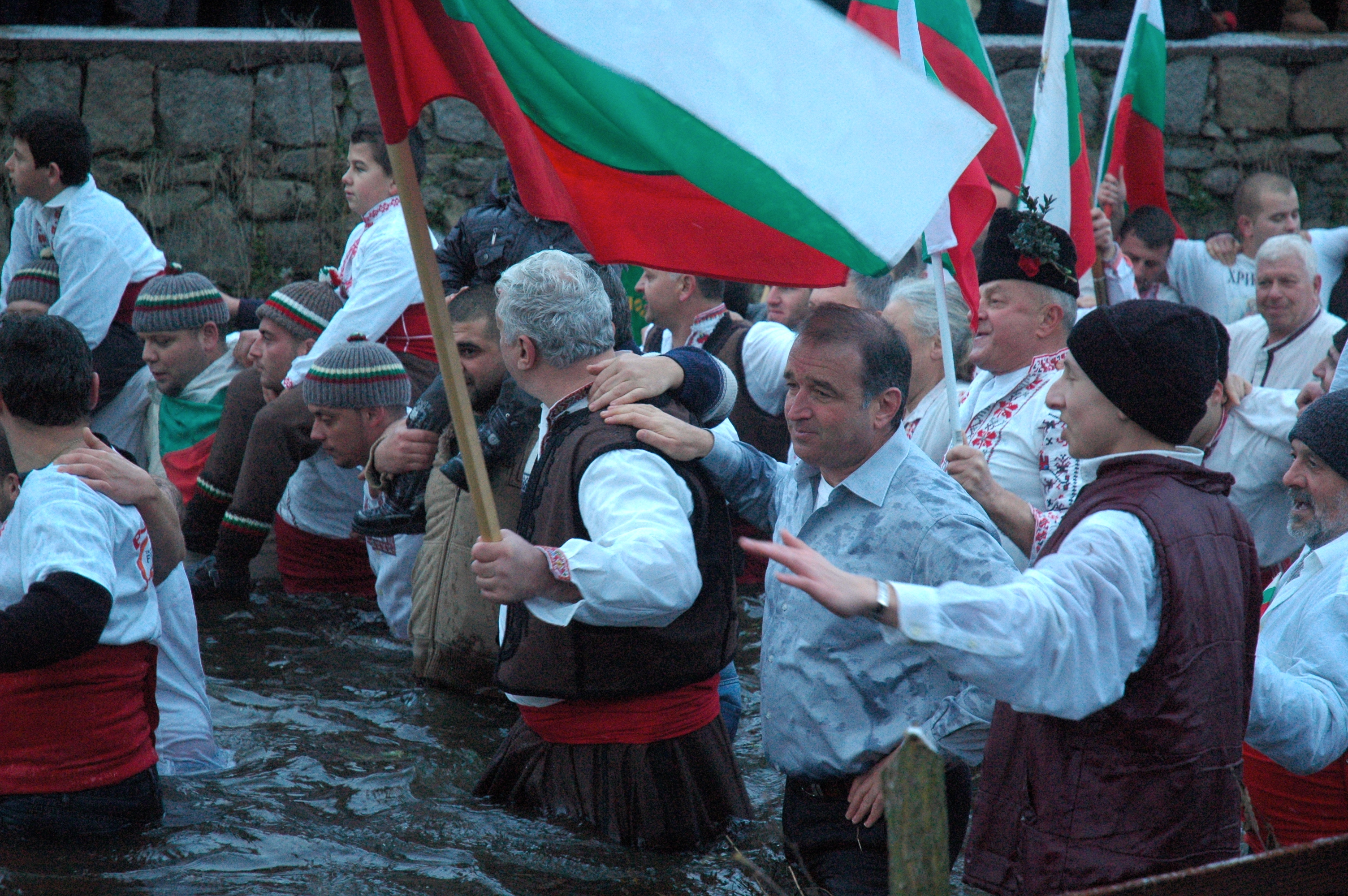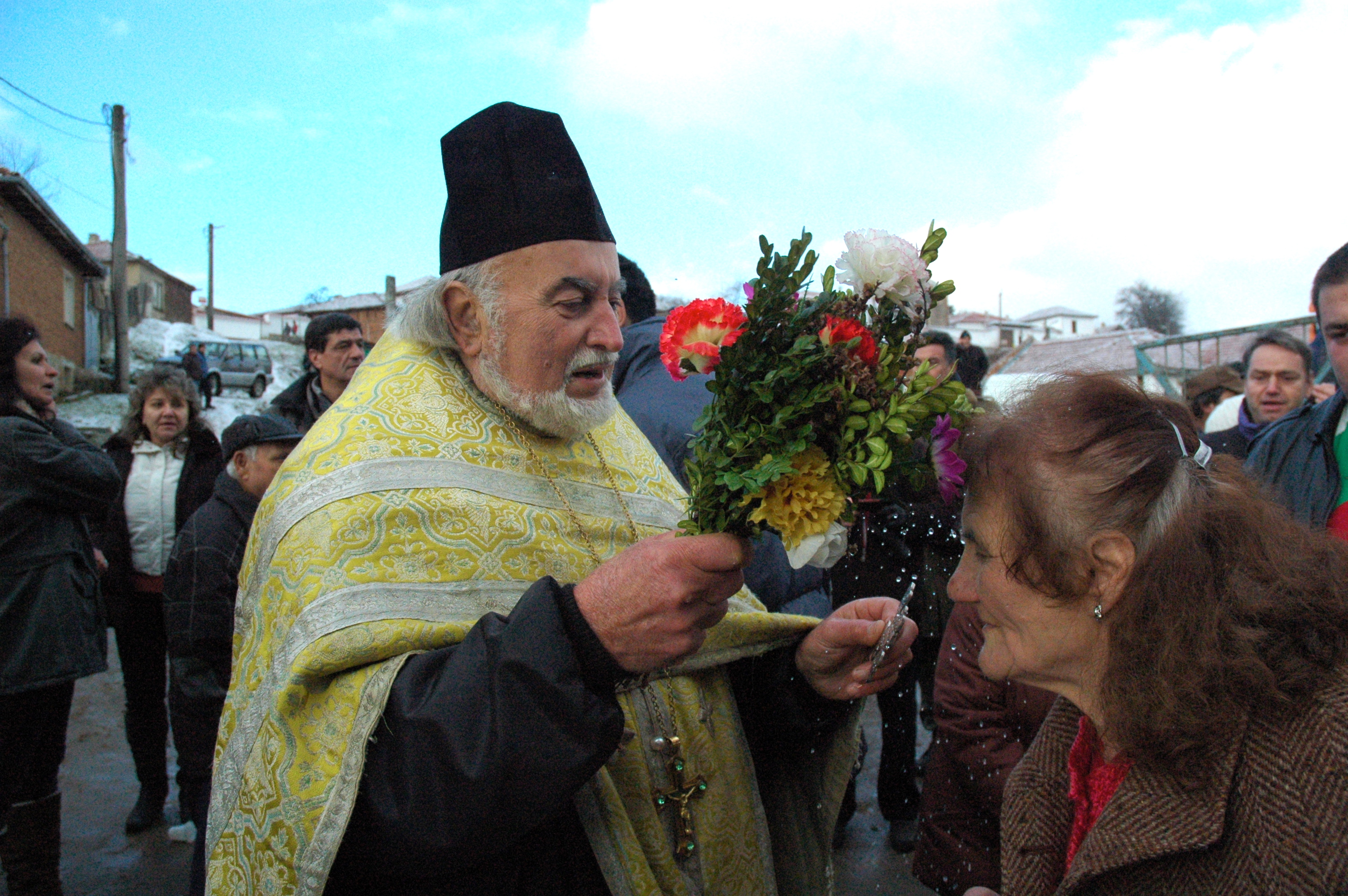Festivals: Bulgaria's St. Jordan's Day
Men form circles to sing and dance in the Tundzha River before diving underwater to catch the blessed cross.
Adventure means something different for every traveler. And rather than jump out of a plane or summit the tallest mountain, I found myself freezing my @ss off in the middle of a traditional religious ceremony in Southeastern Europe…
Getting ready for the celebration.
I was whisked away from the arrivals gate at Sofia Airport by my Bulgarian guide and translator. We drove through the night, had a quick two-hour nap, then woke before dawn in order to head to the banks of the Tundzha River. The purpose of our journey? To witness Bulgaria‘s celebration of St. Jordan’s Day.
I could hear the festivities before I could see them: fireworks, singing, bellowing bagpipes, drums and shouts. The sound literally echoed off the nearby cliffs. In the pre-dawn light I could barely make out the images of swaying male bodies in the geometrically accurate dance circles and high-flying flags. Had I just entered the Twilight Zone, or possibly the shooting of a foreign Indie film? Being a jet-lagged single American woman I was 10% intimidated but 90% intrigued.
Bulgarian men march into the icy waters of the Tundzha River in Kalofer.
I soon learned that I was witnessing St. Jordan’s Day, an annual holiday on January sixth when the Bulgarian Eastern Orthodox Church commemorates the baptism of Jesus Christ by John the Baptist. The celebration takes places in the town of Kalofer, 150km east of the capital, Sofia. In other parts of the country, the holiday is called Krastovden (Day of the Cross) or Voditzi (Waters). The first recorded celebration of St. Jordan’s Day in Bulgaria was in 917 AD.
Fathers, sons, brothers and friends alike join together to celebrate.
Men young and old begin the festivities the night of January fifth, known as the last of the “incensed” nights (this is when I arrived). Despite the cold (and by my standards, freezing), the men gather together to march into the icy rivers and lakes throughout the country, all the while singing, dancing, playing instruments and waving flags. Imagine a parade marching through waist high water.
Braving the frigid temperatures together.
Following tradition, a priest consecrates the water with a cross, and then proceeds to throw it in the river. Once submerged, the men dive under the water to find it, and the “lucky one” who locates the cross is believed to have good health and happiness for the upcoming year.
A woman receives a blessing as she kisses the ring of the priest.
A more solemn version of the festival happens on this same day in Nevsky Square in Sofia, where senior government officials and ministers gather to mark the occasion. This religious-military ritual has been performed for Bulgaria’s warriors since the 10th century and is believed to bring health, happiness and prosperity to the entire nation (and women are allowed to actively participate in this version of the festival).
St. Jordan’s Day in Bulgaria might be cold in temperature, but the people were warm and welcoming and fiercely proud to share their traditions with me.
As Bulgarians would say, Наздраве! – Nazdravye! (Translation: Cheers and good health to you!)
And if you’d like to check out more of Bulgaria or possibly St. Jordan’s Day festival for yourself, contact Odysseia, the guide company I used to book my adventure. I also highly recommend snowshoeing through Rila National Park for more cold weather fun…or hiking through the park if you prefer to wait until it’s a bit warmer!
Related articles

